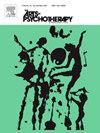"Pictures from the unconscious" – Art making within Jungian analysis
IF 1.5
3区 心理学
Q3 PSYCHOLOGY, CLINICAL
引用次数: 0
Abstract
The Jungian approach to analysis emphasizes the guidance of the unconscious in the process of individuation. Art is an instrument through which this knowledge can be revealed—but it is more than just an instrument. It is a counterpart for dialogue, a mirror reflecting the unconscious, and a process through which the unconscious reveals itself and develops. Additionally, it offers a platform for new experiences, including feelings and sensations. Moreover, it provides a way to reconnect with longforgotten parts of the self and to discover new parts that have never been known. Written from the perspective of an art therapist who is also a Jungian analyst, this theoretical paper presents the fundamental aspects of using the visual arts in the Jungian analytical practice. The first part of the paper elaborates on Jung's use of art and art-making on his path of individuation and in his analytical work with analysands, including Active Imagination. The second part of the paper describes four aspects of the role of art in the practice of Jungian analysis and psychotherapy: Art can serve as a means of communication between the conscious and unconscious parts of the psyche, as well as between the analysand and the analyst. The artwork is the result of the symbol-creating quality of the transcendent function and supports it, assisting in the integration of the unconscious and conscious parts. Interpretations and amplifications are means for elaboration of the artwork as an expression of material emerging from the personal or collective unconscious. The artwork has a transitional role in the therapeutic relationship.
“来自无意识的图画”——荣格分析中的艺术创作
荣格的分析方法强调在个性化过程中无意识的引导。艺术是一种揭示这种知识的工具,但它不仅仅是一种工具。它是对话的对应物,是反映无意识的一面镜子,是无意识自我揭示和发展的过程。此外,它为新的体验提供了一个平台,包括感觉和感觉。此外,它还提供了一种与长期被遗忘的自我部分重新连接的方式,并发现了从未被知道的新部分。这篇理论论文是从一个艺术治疗师的角度写的,他也是荣格分析学家,他提出了在荣格分析实践中使用视觉艺术的基本方面。论文的第一部分详细阐述了荣格对艺术和艺术创作的运用,在他的个性化道路上,在他与分析者的分析工作中,包括积极的想象。论文的第二部分描述了艺术在荣格分析和心理治疗实践中的四个方面的作用:艺术可以作为精神的有意识和无意识部分之间的交流手段,也可以作为分析者和分析者之间的交流手段。艺术作品是超越功能的符号创造品质的结果,并支持它,协助无意识和有意识部分的整合。诠释和放大是将艺术作品作为一种从个人或集体无意识中浮现的材料表达的手段。艺术品在治疗关系中起着过渡作用。
本文章由计算机程序翻译,如有差异,请以英文原文为准。
求助全文
约1分钟内获得全文
求助全文
来源期刊

Arts in Psychotherapy
Multiple-
CiteScore
3.20
自引率
11.10%
发文量
66
期刊介绍:
The Arts in Psychotherapy is a dynamic, contemporary journal publishing evidence-based research, expert opinion, theoretical positions, and case material on a wide range of topics intersecting the fields of mental health and creative arts therapies. It is an international peer-reviewed journal publishing 5 issues annually. Papers are welcomed from researchers and practitioners in the fields of art, dance/movement, drama, music, and poetry psychotherapy, as well as expressive and creative arts therapy, neuroscience, psychiatry, education, allied health, and psychology that aim to engage high level theoretical concepts with the rigor of professional practice. The journal welcomes contributions that present new and emergent knowledge about the role of the arts in healthcare, and engage a critical discourse relevant to an international readership that can inform the development of new services and the refinement of existing policies and practices. There is no restriction on research methods and review papers are welcome. From time to time the journal publishes special issues on topics warranting a distinctive focus relevant to the stated goals and scope of the publication.
 求助内容:
求助内容: 应助结果提醒方式:
应助结果提醒方式:


